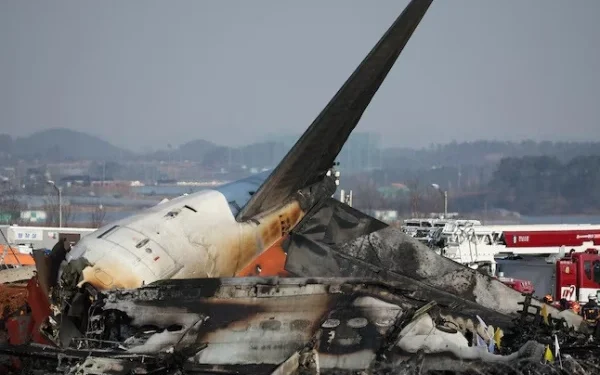When a plane crash occurs, it often results in widespread destruction—wreckage is scattered, fire consumes large sections of the fuselage, and entire parts of the aircraft are obliterated. And yet, amidst the chaos, one device almost always survives—the black box. This small but incredibly important piece of equipment plays a vital role in understanding the causes of aviation disasters.
But how does the black box remain intact even when everything around it is destroyed? The answer lies in its incredible design, robust materials, and rigorous testing standards. This article explores the science and engineering behind the black box, and explains how it withstands fire, impact, and deep-sea conditions.
What Is a Black Box and What Does It Record?
Despite its name, the black box is not black at all. In fact, it is usually painted in bright orange or red to ensure visibility among debris after a crash. The black box is a general term that refers to two crucial components of flight data recording systems:
1. Cockpit Voice Recorder (CVR)
- Captures audio from microphones placed in the cockpit, including the pilot’s and co-pilot’s conversation, background engine sounds, radio transmissions, and alarms.
- Typically stores the last 2 hours of cockpit audio in a continuous loop.
2. Flight Data Recorder (FDR)
- Records various technical and mechanical parameters of the aircraft such as altitude, airspeed, vertical acceleration, fuel flow, engine status, autopilot activity, and more.
- Modern FDRs record up to 25 hours of flight data across thousands of parameters.
These two components are usually housed together in a crash-survivable memory unit (CSMU) that makes up the black box. It is designed not only to preserve vital data during extreme conditions but also to ensure it can be recovered and read for accident investigations.
Why Is It Called a Black Box?
The origin of the term “black box” is debated. One popular theory is that during early aviation days, any unfamiliar or complex device in electronics or engineering was often referred to as a “black box” due to its opaque function to outsiders.
In reality, black boxes are painted in high-visibility orange with reflective white stripes to make them easier to locate. This is why aviation professionals often refer to it as the Flight Recorder rather than “black box.”
The Engineering Marvel: How Is the Black Box Built to Survive?
The black box is engineered to endure the most extreme crash conditions that any part of the aircraft might face. Here’s how:
1. Built with Super-Strong Materials
The outer casing of the black box is made from titanium or stainless steel—both of which offer exceptional strength, heat resistance, and corrosion resistance. Titanium is lightweight and durable, while stainless steel offers additional toughness and resistance to puncture.
2. Insulated and Shock-Protected Memory Module
Inside the metal case, the actual memory chips that store data are protected by:
- Layers of thermal insulation
- Shock-absorbing materials like silicone gel or aluminum honeycomb
- A second layer of impact-resistant armor plating
This multi-layer structure ensures that the memory is shielded from heat, shock, pressure, and water ingress.
3. Fire and Heat Resistance
Black boxes are required to withstand temperatures of up to 1,100 degrees Celsius (2,012°F) for a minimum of 60 minutes. These temperatures replicate conditions in a post-crash fire where aircraft fuel, often kerosene-based jet fuel, burns at extremely high heat.
Additionally, the black box must survive short-duration flash fires of up to 1,100°C and prolonged exposure to lower temperatures for hours, without the internal data being affected.
4. Extreme Impact Tolerance
The device can survive an impact force of 3,400 g—where “g” is the gravitational acceleration (9.8 m/s²). For comparison:
- A car crash subjects passengers to around 50 g.
- Black boxes must endure forces up to 70 times higher than that.
This tolerance means it can survive high-speed ground impacts, collisions with solid terrain, and aircraft disintegration at high altitudes.
5. Water and Pressure Resistance
In the event of a sea crash, the black box can withstand water pressure at depths of up to 6,000 meters (nearly 20,000 feet). That’s deeper than most parts of the Atlantic Ocean.
To ensure buoyancy and retrieval, the device is also:
- Waterproof for at least 30 days
- Equipped with a hydrophone beacon (also called an Underwater Locator Beacon, or ULB)
How Is the Black Box Located After a Crash?
If a crash occurs over water, such as the ocean or a deep lake, the black box activates its Underwater Locator Beacon (ULB). Here’s how it works:
- Emits ultrasonic “pings” at a frequency of 37.5 kHz
- These pings occur once every second and can be detected by sonar or specialized underwater microphones
- The beacon has a battery life of 30 days, which is the standard search window
- Signal can travel up to 2,000 to 3,000 meters in clear water
In deep-sea crashes like Air France Flight 447 (2009), search teams took over two years to recover the black boxes using remote submersibles and ocean mapping technologies. Their survival helped reconstruct the final moments of the flight and led to major aviation safety improvements.
Rigorous Testing and Global Standards
Before a black box can be certified for use in commercial aircraft, it must undergo a series of extreme tests mandated by the FAA (Federal Aviation Administration) and EUROCAE (European Organization for Civil Aviation Equipment).
Testing Protocols Include:
- Crash Impact Test: Simulates a deceleration of 3,400 g for 6.5 milliseconds
- Fire Test: Exposure to flame at 1,100°C for 60 minutes
- Deep-Sea Immersion Test: Exposure to water pressure of 60 MPa, simulating deep ocean conditions
- Penetration Test: Impact of a 500-lb weight dropped from 10 feet onto a steel pin to test puncture resistance
- Saltwater Immersion Test: Evaluates corrosion resistance
- Static Crush Test: A force of 5,000 pounds is applied to test structural integrity
These tests ensure that every black box can endure the most extreme crash conditions, no matter the environment.
Modern Enhancements and Future Trends
Black box technology has evolved significantly over the decades. Some of the recent innovations include:
1. Real-Time Data Streaming
Some experts are pushing for cloud-based flight data streaming, especially after high-profile cases like Malaysia Airlines Flight MH370, where the black box was never recovered.
2. Deployable Recorders
Airbus and other manufacturers are experimenting with deployable black boxes that automatically eject and float upon impact with water—making them easier to retrieve.
3. Longer Recording Times
Advancements in storage have allowed for:
- 25+ hours of flight data (up from 2)
- Continuous voice recording, avoiding overwriting older data
Conclusion: An Indestructible Witness to Aviation Disasters
The black box stands as a technological marvel and a critical component of aviation safety. Through its heat resistance, impact tolerance, and waterproof design, it survives catastrophes that destroy everything else around it. It is the silent witness that tells investigators what truly happened in the cockpit and onboard the aircraft during the final moments before a crash.
Understanding how black boxes work, and why they survive even the most devastating plane crashes, is a testament to human engineering and the aviation industry’s commitment to safety and accountability.

























